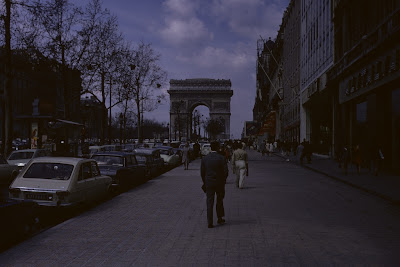Aging of Color Slides - After

In June of 2007 I posted a story about how many (but not all) of the color slides I have taken in the last 55 years have aged and lost their color. Since then, I have learned a lot about restoring colored slides - aided by two books on the subject. I still have more to learn, so this is a progress report.
This is the best that I have been able to do with this slide. (See the previous post to see what it looked like before restoration.) It is not perfect. The skin color on baby Nancy looks a little chalky to me. The wall behind my grandmother was actually more yellow. Nancy's sweater was probably more blue and less green. Nevertheless, I am surprised at how much has been recovered.
I expected that Photoshop would be involved in photo restoration and the books that I read used Photoshop examples to show what can be done and how. However, Photoshop was not used at all to produce the version above. The heavy lifting was done by Digital ROC software that came at no additional cost with my slide scanner. Then I made a slight red tint adjustment with Apple Aperture (the software that I use to store and catalog photos).
I did try color adjustments using Photoshop, but in this case using the ROC software when the scan was made produced better results than correction with Photoshop after scanning. I will spare you further boring details unless ask.
In the upper left of the photo you can see some "ghosts" that look like slide processing defects. They are actually reflections off the window behind my grandmother.
(Let me remind you that if you click on any photos in this post you will see an enlarged version that shows much more detail. Clicking on this shows a lot. That Leica that I used 50 years ago took some pretty sharp photos.)




